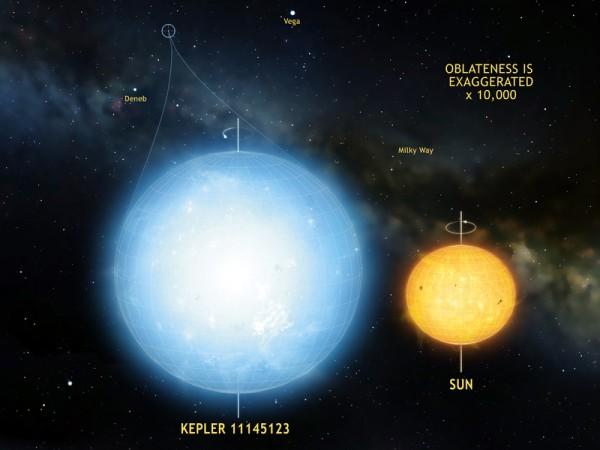
The star dubbed Kepler 11145123 is said to be the roundest natural object found in the universe so far. This star was observed by Nasa's Kepler mission.
Various factors like gravity and speed of rotation are responsible for the shape of stars, and they aren't perfectly round naturally.
A team of researchers led by Laurent Gizon from the Max Planck Institute for Solar System Research and the University of Göttingen, for the first time, measured the oblateness of this slow-rotating star, which is 5,000 light years away. Oblateness refers to the flatness of the star at the poles. The star was measured using asteroseismology, a technique of studying the oscillations of stars.
It was found that the Sun rotates for a 27-day period and its radius at the equator is greater than that at the pole. On the other hand, Kepler 11145123 was found to rotate slowly and its size was double the Sun's. The difference in the radius between the equator and the pole was found to be just 3 km.
The slow rotation of the star is said to be responsible for keeping its spherical shape unharmed.
"This makes Kepler 11145123 the roundest natural object ever measured, even more round than the Sun," Gizon said.
The reason this star was analysed by the researchers was because it had sinusoidal oscillations or smooth oscillations. The researchers analysed the star for more than four years. The analysis included:
- Periodic contractions and expansions of the star based on its luminosity.
- Observations of the frequencies of the modes of oscillations in the regions of high and low latitude, which were more sensitive.
This star was found to be less oblate than its rotation rate implied.
The researchers stated that this is not the only star with a precise oscillation rate.
"We intend to apply this method to other stars observed by Kepler and the upcoming space missions TESS and PLATO. It will be particularly interesting to see how faster rotation and a stronger magnetic field can change a star's shape," Gizon said. "An important theoretical field in astrophysics has now become observational."

















